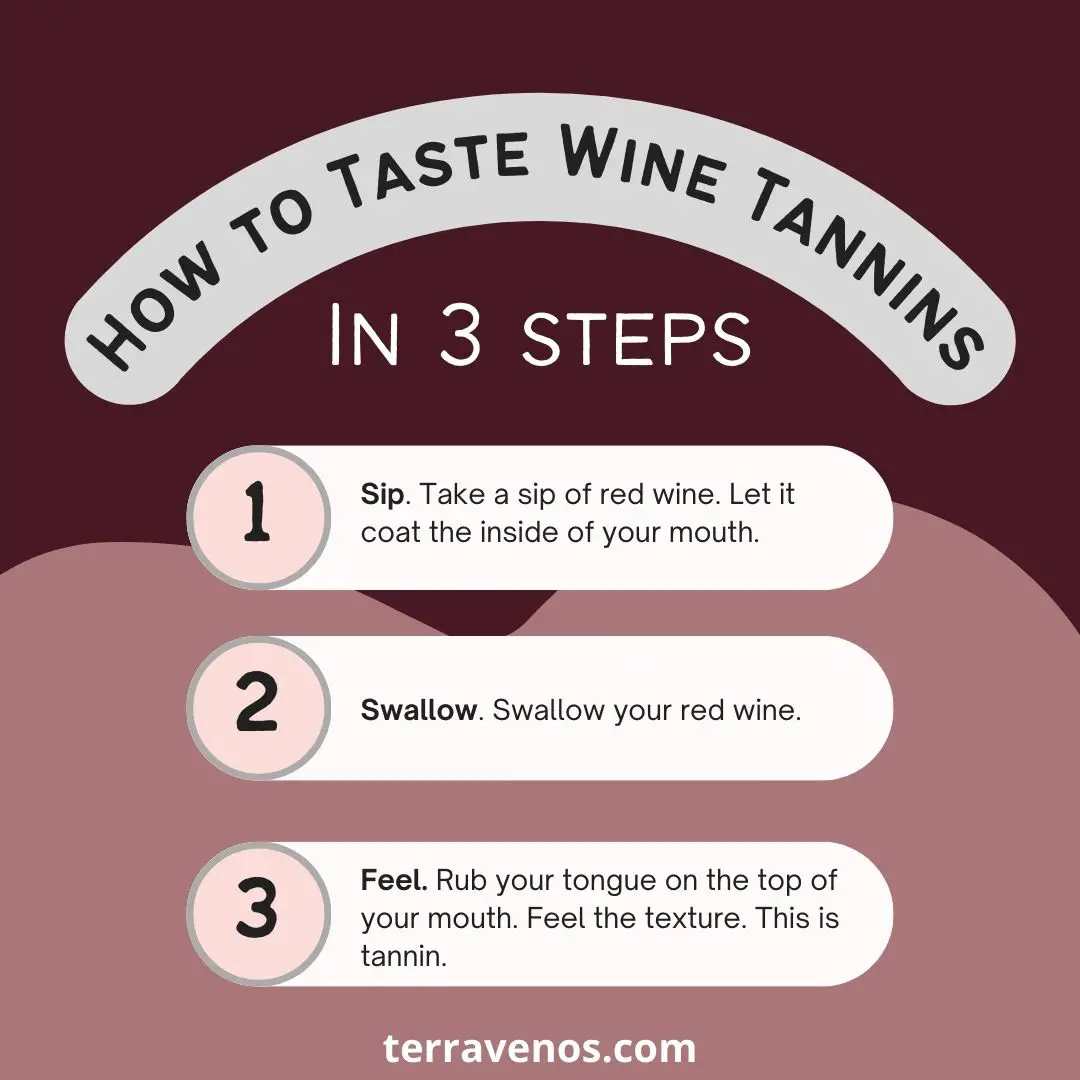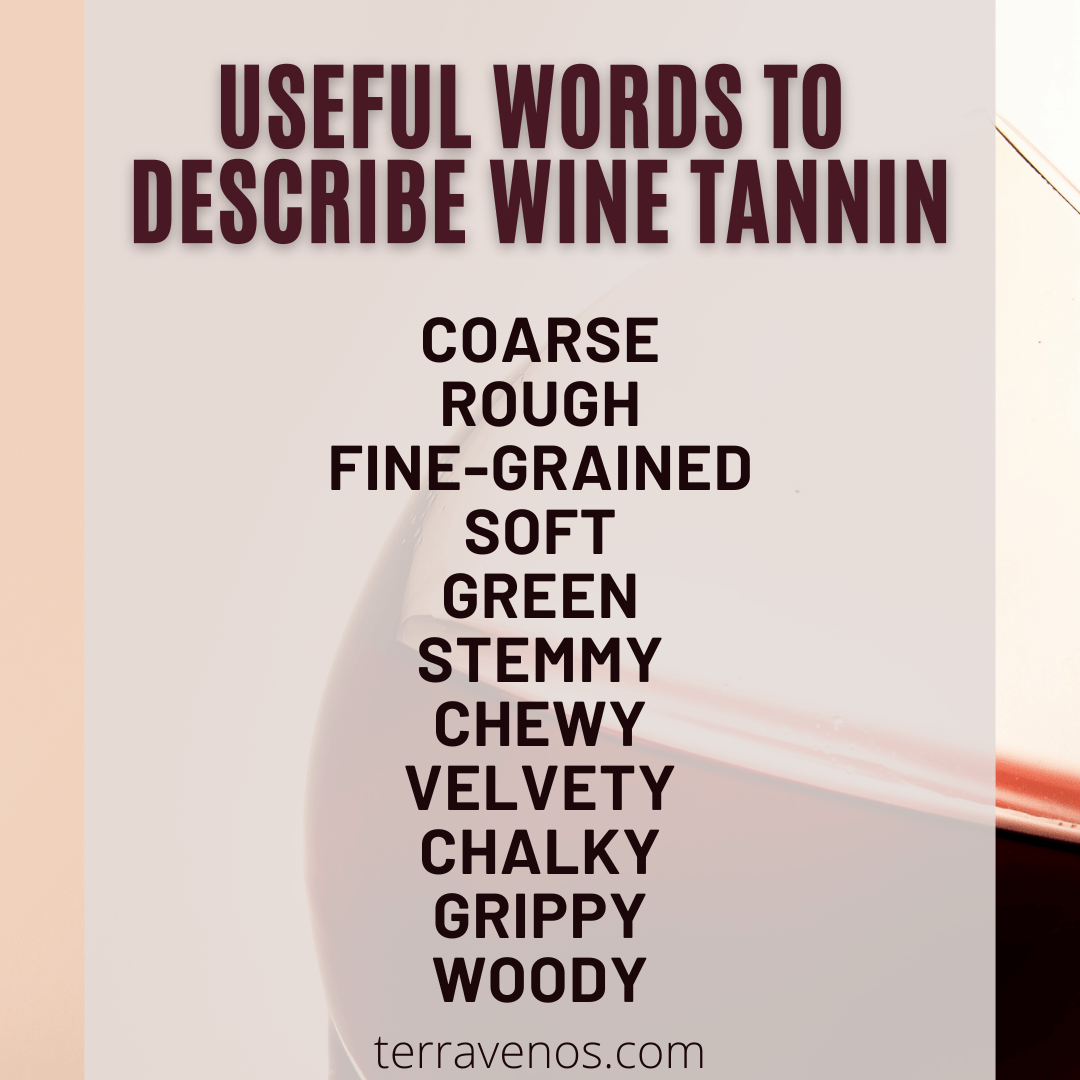
You’ve heard the word ‘tannin’ when out tasting wines, or seen it on labels, as in ‘firm tannins’ or ‘ripe tannins’, but what does this have to do with the actual wine? And how do you taste wine tannins in the first place?
What Do Tannins Taste Like in Wine?
Here’s what you need to know.
- How to Taste Wine Tannins: 3 Easy Steps
- Where Do Wine Tannins Come From?
- Wine Tannin Tasting Tip: Practice Makes Perfect
- At-Home Experiment: High and Low Tannin Wine
- Why Does Knowing What Tannin Tastes Like in Wine Matter?
- What Are Words to Describe Tannin in Wine?
- What Else Do You Need to Know About Wine Tannins?
- Thirsty for More?
Hint: 99% of the time, you will only experience wine tannins with red wines. I’m making that statistic up, but the fact remains that overwhelmingly tannins are a component in red wines, not white wines. So put the white bottle back in the fridge and go pour yourself a glass of red wine (orange wines are a great exception).
How to Taste Wine Tannins: 3 Easy Steps
- Take a mouthful of red wine and swish it around your mouth.
- Swallow the wine.
- Now take your tongue and rub it against the roof (top) of your mouth. You will feel something textural. This is the wine tannin.
Some red wines will have silky, smooth tannins that are soft in your mouth. Your tongue slips right over them. Other red wines will have a sandpaper quality.
Still, others can feel almost like chalk or grittiness.
Where Do Wine Tannins Come From?

Wine tannins come from the grape skins, seeds, and stems of the grapevine.
Some grapes and winemaking styles result in wines with higher levels of tannin.
Because most white wines aren’t made with any (or very little) skin contact, they have naturally lower tannins.
Wine Tannin Tasting Tip: Practice Makes Perfect
Now that you know how to taste tannins, repeat the tongue exercise above every time you drink red wine.
You can learn how to taste tannin at home or when you’re out and about. It’s easy to do and you’ll soon have your own mental reference of the different ways tannin can express itself in a wine.
At-Home Experiment: High and Low Tannin Wine
The best way to tease out the differences between tannin and how it shapes a wine is to do a side-by-side comparison of a high and low tannin wine.
Pick up 1 bottle from the low-tannin column, and 1 bottle from the high tannin column. Invite over a few friends and see if you can all tell the difference.
Red Wine Tannin Challenge
| Low Tannin Red Wines | High Tannin Red Wines |
|---|---|
| Pinot Noir | Cabernet Sauvignon |
| Gamay | Nebbiolo |
| Merlot | Cabernet Franc |
Helpful Tip: Here’s how to host your own blind tasting at home.
Why Does Knowing What Tannin Tastes Like in Wine Matter?
Some wine grapes have notoriously high tannins. Wines made from Baga, Tannat, Nebbiolo, and Cabernet Sauvignon are all classic, high-tannin wines.
Many new-to-wine drinkers find these high-tannin wines off-putting.
They’re not gateway wines. More approachable, silkier reds are better ambassadors for the world of red wine. If you find that you like lower-tannin red wines, stick with Merlot, Malbec, and Pinot Noir.
And if you REALLY dislike tannin in red wine, then stick with white wines.
No judgment on my end. Drink what you love!
What Are Words to Describe Tannin in Wine?

Professional wine tasters and wine aficionados use a range of words to describe tannins. Here’s a useful list:
- Coarse
- Rough
- Fine-grained
- Soft
- Green
- Stemmy
- Chewy
- Chalky
- Velvety
- Grippy
- Woody
While you’re tasting your wine, see if any of these descriptors fit what you’re feeling in your mouth.
Remember, one person’s chewy may be another person’s chalky. Focus on what you’re feeling.
What Else Do You Need to Know About Wine Tannins?
Tannic wines are food wines, not solo-sippers. These wines beg for rich food pairings that will help balance them out.
Think roasted meats or vegetarian dishes rich in umami flavors – roasted portabello mushrooms or zucchinis with olive oil.
On the other end of the spectrum, low tannin red wines may be perfect for a lighter meal – salads, fish, and risottos.
Thirsty for More?
Check out this post on Wine Bitterness or Astringency where there’s a fun at-home tasting experiment you can do.
Here’s a 30-second tasting tip to see if you’re serving your wines too cold.




